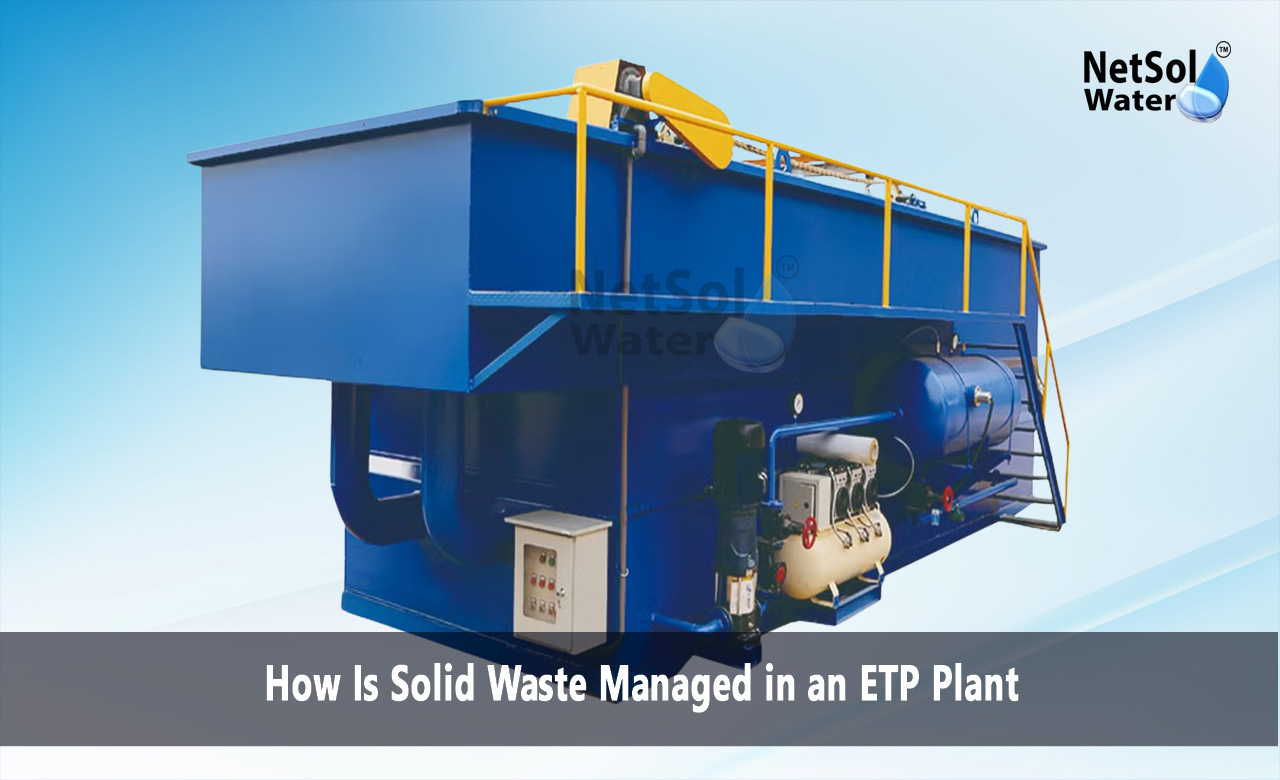How Is Solid Waste Managed in an ETP Plant?
Solid waste includes everything from large debris to fine sludge. In an ETP the process must remove these solids in stages. First the system removes large solids in screens. Then the ETP sheds heavy grit in grit chambers. Later the system lets finer solids settle in sedimentation tanks. The ETP uses biology to gather even smaller particles. That step forms sludge that needs more care. Next the ETP thickens and dewaters the sludge. This stage cuts volume and weight. Finally the system sends the treated sludge for safe disposal or reuse. Each stage matters. Effective ETP design saves energy and cost. It also protects water quality. Proper handling keeps equipment safe. It also meets regulations. Netsol Water designs ETPs with each step in mind. Our experts apply deep know how to each plant. They focus on solid waste flow. This flow starts at the inlet and ends at disposal
Screening and Grit Removal
Managing large and heavy particles keeps the plant running well. Let us have a look at some key steps.
Coarse Screening: An ETP starts with coarse screens. These screens trap sticks and rags. Operators flush the trapped matter away with water jets. This step stops damage to downstream pumps.
Fine Screening: Next the flow passes fine screens. These screens catch small debris. Staff remove the collected matter by automated rakes. These screens prevent blockages in pipes.
Read: Effluent Treatment Plant Manufacturer
Grit Chambers
After screening the stream enters a grit chamber. Heavy sand and grit settle to the bottom. Lighter organic bits remain in suspension. Operators remove the settled grit by scraper arms.
This stage preserves the life of pumps and mixers by removing abrasive grit and debris.
Primary Sedimentation
Settling of suspended solids reduces the load on later steps. Let us have a look at some settling methods.
Plain Sedimentation Tanks
Water flows slowly into a large tank. Solids sink by gravity to the floor. Clear water moves on to the next stage. Staff drain the settled sludge at intervals.
Tube Settlers
In some ETPs tubes help particles settle faster. These inclined tubes increase surface area. Solids slide down the tubes into a hopper. This design shrinks tank size and speeds operation.
Good settling here cuts the cost of energy and chemicals in later steps.
Biological Treatment Solids
Microbial action breaks down organic matter in water. Let us have a look at some solids management tasks.
Activated Sludge Process: The plant adds air to foster bacteria in a reactor. These bacteria feed on dissolved organics. The mix flows into a secondary clarifier. There the biomass settles as sludge.
Membrane Bioreactor: A membrane bioreactor filters water through fine pores. It keeps nearly all microbes inside the reactor. The method yields high quality water at low sludge volume.
Handling these solids well makes the ETP more efficient and yields cleaner water.
Sludge Thickening and Dewatering
Removing water from sludge cuts disposal costs. Let us have a look at some thickening tactics.
Gravity Thickening: Sludge sits in a tank where solids sink. The thicker sludge moves to dewatering units. Overflow returns to the plant for more treatment.
Mechanical Dewatering: The plant uses centrifuges or belt presses to squeeze water out. The pressed cake dries faster and weighs less. Staff haul the cake away for final disposal or reuse.This stage shapes the quality of the final solid product and lowers transport cost.
Final Disposal and Resource Recovery
A safe end use or disposal closes the loop. Let us have a look at some options.
Landfill Disposal: Dewatered sludge may go to a landfill. Operators ensure it meets safety standards for disposal. Long term monitoring protects soil and water around the site.
Composting and Soil Amendment: In many cases the sludge mixes with other organics in an open compost pile. Microbes break down matter into stable compost. This compost serves as a soil conditioner in agriculture.
Recovering resources from sludge adds value and cuts waste volume.
Conclusion
Solid waste management in an ETP depends on clear steps from screening to disposal. Netsol Water stands as a leading manufacturer of ETP systems that handle each phase with care. An efficient ETP minimizes risk and turns waste into useful products. If you want to learn more about how an ETP can fit your needs please get in touch today. Request a consultation with Netsol Water to explore custom ETP solutions and detailed guidance on solid waste handling in your plant.
Contact Netsol Water at:
Phone: +91-9650608473, Email: enquiry@netsolwater.com



